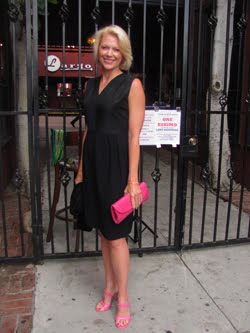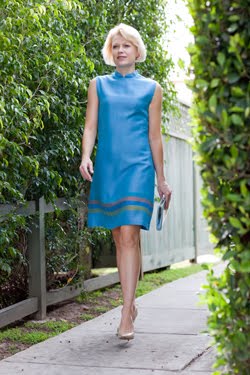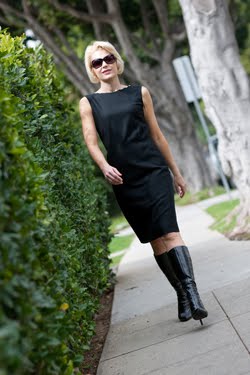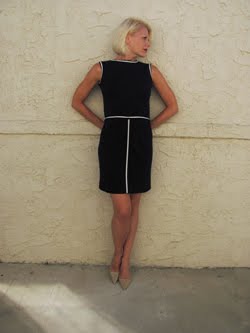The Purple Rose of Cairo (1985) is Woody Allen's favorite film of all that he's written and directed. Surprised? It may be considering his incredible canon of work, but not when you understand the reasons. For one, it came out nearly exactly as he envisioned it, which was a different experience than many of the others that we now count as classic, such as Annie Hall and my personal favorite Manhattan. Inspired by Sherlock, Jr. and Hellzapoppin' along with the Italian play Six Characters in Search of an Author, Woody created a film about a fictional film within it (of the same name) that eventually leads a lady to love. Interestingly, it also leads the lady to loss, which was a critically important part of the picture for Woody. But he also loved Purple Rose for its occasion to celebrate the great Art Deco style that had made such an impression on him when he escaped to New York theaters as a child.
The Purple Rose of Cairo is set in New Jersey during the Depression when life was bleak for everyone but especially so for the character of Cecilia (Mia Farrow). She finds herself in a loveless marriage and routinely seeks solace in the romance of the movies at the local theater. This is the time for it, too...Art Deco is all the rage and she escapes into the sparkling and luxurious lifestyle she sees on the silver screen. She is able to escape even more when one of the characters, adventurer Tom Baxter (Jeff Daniels), actually jumps off the screen to declare his love for Cecilia and later pulls her into the picture itself.
Creating a film within a film was no small feat and its success was largely due to the genius of cinematographer Gordon Willis. He and Woody worked extensively together starting with Annie Hall, and Woody continues to credit him with really showing how to use the camera artistically. He is my favorite cinematographer of all time, creating the moody masculinity of The Godfather in color while also idealizing Manhattan in black and white. In essence, he needed to do both at the same time within Purple Rose...realistically represent the color (or lack thereof) of New Jersey life during the 1930s and the glittering glamour of black and white Art Deco musicals.
Costume designer Jeffrey Kurland, another regular member of Woody's talented crew, had a similar challenge for the characters' style. For Purple Rose, he worked first at picking pieces for the color side of the production, a palette in varying shades of brown due to the season and limited fabric options in Depression-era wardrobes. The colors of the costumes work in perfect harmony with everything in the production design. At the same time, he also tapped into the elegance that was dominant on the screen at that time--tuxedos and silk bias-cut gowns--and capably chose fabrics that would translate well when shot in black and white.
Just as Blade Runner (1982) drew its style inspiration from film noir of the 1940s, so does Purple Rose share its style with Art Deco films of the 1930s. Though Woody and his cast and crew drew inspiration from many movies, Top Hat was at the forefront of everyone's mind. You'll see many comparisons in the screen shots below. In fact, it was so meaningful that Woody had Fred Astaire and Ginger Rogers make an appearance dancing the iconic "Cheek to Cheek" at the very end. It was carefully chosen for its style and story...so uplifting that it proves movies can raise anyone from the depths of despair and bring meaning into our lives. Top Hat still has that effect after nearly 70 years and its Art Deco style is more popular than ever. See it all through Woody's eyes in The Purple Rose of Cairo.
The movie starts in color--a brown palette for New Jersey autumn in the 1930s--
and Cecilia spending time in her favorite place...the movie theater
Nodding to the classic 1930s films, Purple Rose is even a RKO production (like Top Hat)
and starts with a title sequence on invitation cards
Wealthy Manhattan playwright Henry (Edward Herrmann, at piano) and his friend Jason (John Wood)
are reminiscent of Fred Astaire and Edward Everett Horton
Careful casting...Horton and Wood even look alike
The club in Purple Rose's "madcap Manhattan adventure" (above)
draws inspiration from the Art Deco elegance of sets like Top Hat
In a nod to the fascination of archeology in Art Deco design,
Purple Rose of Cairo takes us to Egypt to meet adventurer Tom Baxter (Jeff Daniels)
Cecilia's sad life as a waitress and unloved wife
is transformed when the character of Tom Baxter jumps off the screen to profess his love
A perfect kiss from Tom Baxter makes Cecilia swoon,
but competition arrives when Gil Shepherd, the actor who plays Tom, meets Cecilia
Gil woos Cecilia at a music store
Tom woos Cecilia by taking her clubbing onscreen with the Count (played by veteran Van Johnson)
and on their own on the town before ending up at the movie's Manhattan penthouse
Cecilia admires the white phone that she sees in all the great Art Deco films
like Ginger Rogers on her white phone in Top Hat
Cecilia is forced to choose between fictional Tom and the real Gil, and finds herself left behind...
she once again seeks solace in the theater
The movie that's flickering on the screen just happens to be Top Hat
Though an unhappy ending for Cecilia, she cannot be moved by the magic of the movies...
a lesson for us all
To find the best selection of Woody Allen films, be sure to visit the TCM Shop!


















































































































No comments:
Post a Comment